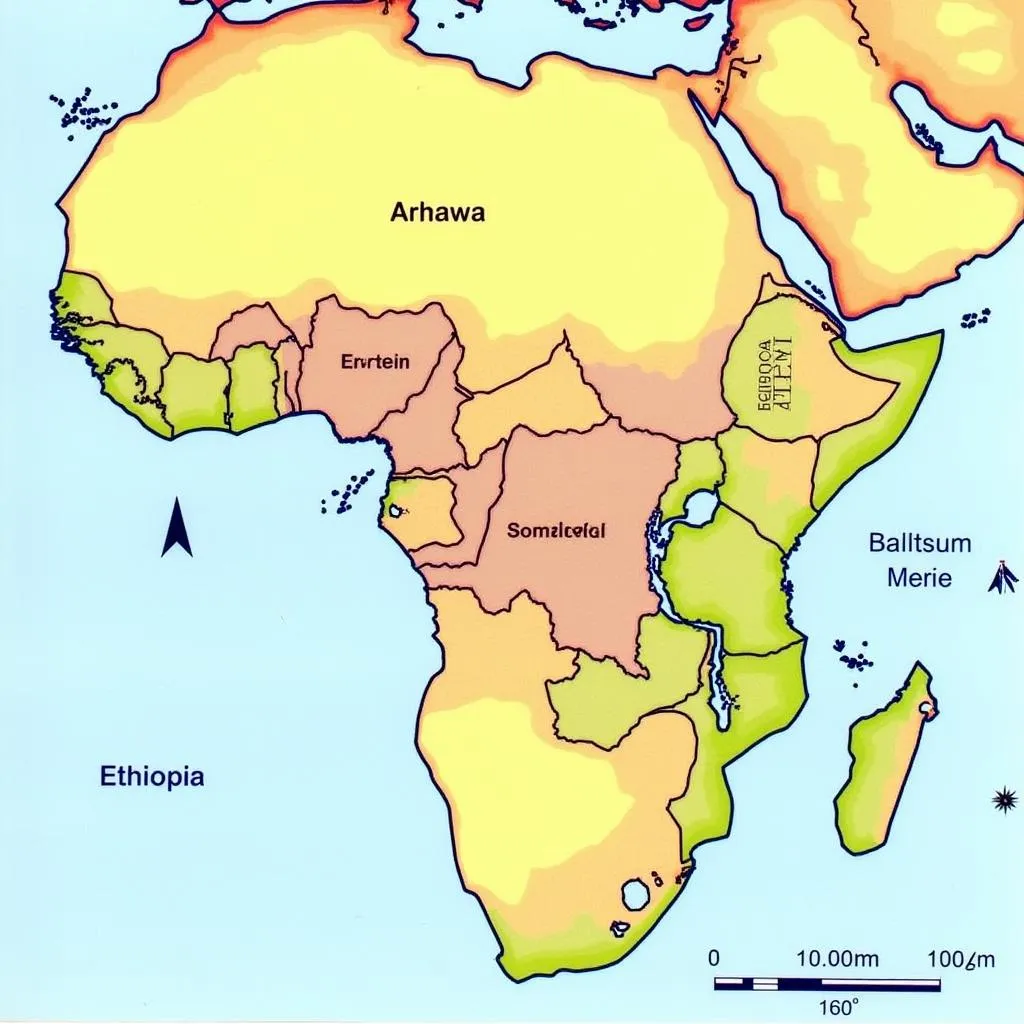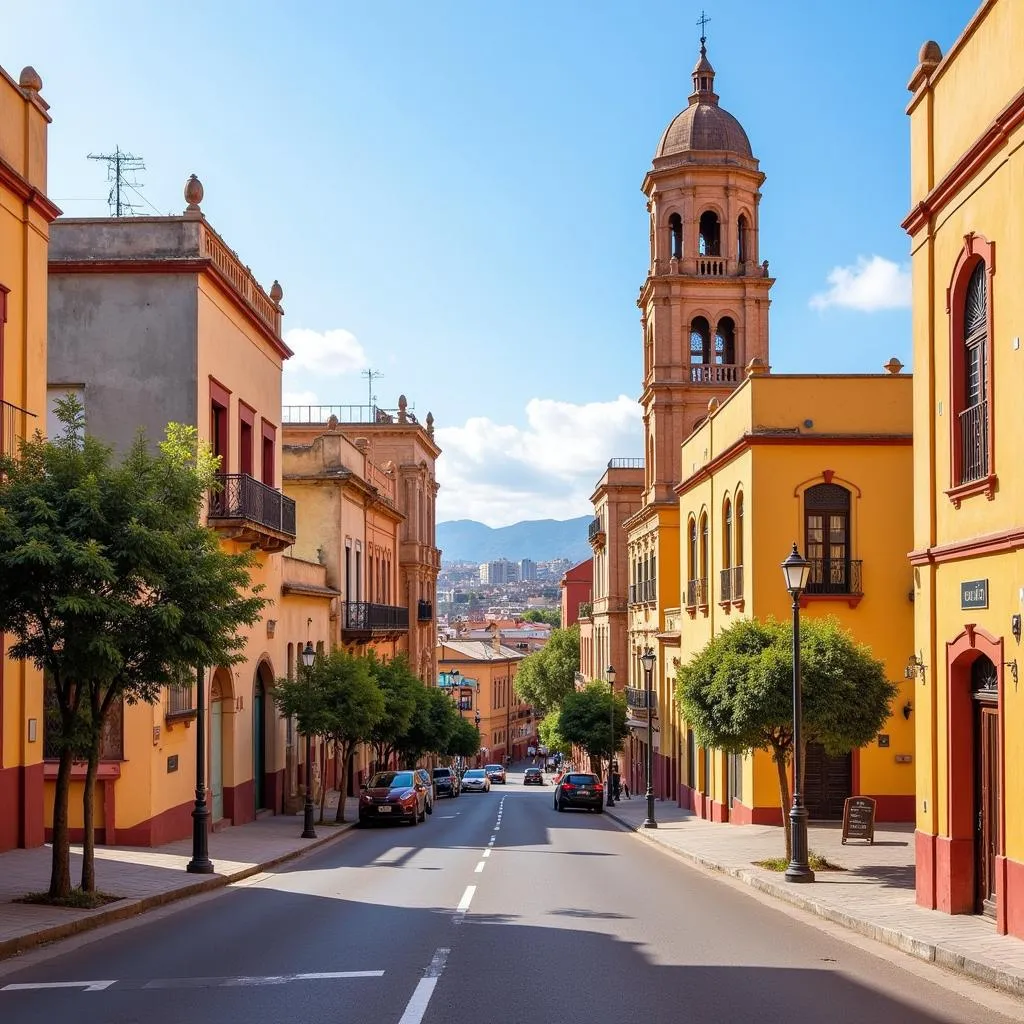The African Colonies of Italy: A History Forged in Ambition and Tragedy
The African Colonies Of Italy represent a relatively brief but impactful chapter in the continent’s colonial history. Driven by late-19th-century expansionism, Italy sought to establish its own colonial empire in Africa, ultimately controlling territories that encompass present-day Eritrea, Somalia, and Libya. This pursuit of empire, however, was marked by brutal conquest, political maneuvering, and ultimately, a legacy of complex social and political dynamics that continue to shape these nations today.
The Scramble for Africa: Italy Joins the Fray
Italy’s colonial ambitions emerged amidst a period of intense competition for territory in Africa. As European powers carved up the continent, the newly unified Italy, eager to assert its own place on the world stage, joined the scramble. Italy’s colonial endeavors began in 1869 with the purchase of Assab, a small port in present-day Eritrea. This seemingly minor acquisition marked the beginning of Italy’s expansion into the Horn of Africa.
Eritrea: The First Foothold
Italy’s presence in Eritrea grew gradually. By 1882, Italy formally established the colony of Italian Eritrea, viewing it as a strategic gateway to the Red Sea and beyond. The colonization of Eritrea was met with resistance from the local population, leading to conflicts and uprisings. Despite the resistance, Italy maintained its grip on Eritrea, exploiting its resources and strategically positioning itself for further expansion.
 Italian Troops in Eritrea
Italian Troops in Eritrea
Somalia: A Colony Forged Through Treaties and Conflict
Italy’s colonial ambitions extended beyond Eritrea to the southeastern coast of Africa. Through a series of treaties with Somali sultans, Italy gained control of coastal areas, eventually forming Italian Somaliland in 1889. However, Italy’s control remained largely confined to the coast, facing persistent resistance from Somali communities in the interior. This resistance would later play a significant role in shaping the political landscape of post-colonial Somalia.
The Italo-Ethiopian Wars: Ambition and Defeat
Perhaps the most defining chapter in Italy’s colonial history in Africa is marked by its two wars with Ethiopia. The First Italo-Ethiopian War (1895-1896) ended in a humiliating defeat for Italy at the Battle of Adwa, shattering Italy’s image of invincibility and marking a pivotal moment in Ethiopian history. This defeat fueled Italy’s desire for revenge and territorial expansion, setting the stage for the Second Italo-Ethiopian War in 1935.
Under the fascist regime of Benito Mussolini, Italy launched a brutal invasion of Ethiopia, utilizing modern weaponry and tactics against the ill-equipped Ethiopian forces. Despite international condemnation and accusations of war crimes, Italy succeeded in conquering Ethiopia in 1936, adding it to its growing East African empire.
 Map of Italian East Africa
Map of Italian East Africa
Libya: A Hard-Fought Conquest
Italy’s colonial ambitions also extended to North Africa, specifically Libya, then under the control of the Ottoman Empire. In 1911, Italy launched the Italo-Turkish War, seizing Tripoli and eventually gaining control of Libya. However, Italy’s control of Libya remained tenuous, facing persistent resistance from the local population, particularly the Senussi movement. It was not until the late 1920s, under the rule of Mussolini, that Italy managed to establish firmer control over Libya, but not without brutal suppression and displacement of the indigenous population.
The Legacy of Italian Colonialism in Africa
The end of World War II brought about the dismantling of Italy’s colonial empire. Eritrea became a part of Ethiopia, while Somalia and Libya gained their independence. However, the legacy of Italian colonialism continues to shape the social, political, and economic landscapes of these nations.
The impact of Italian colonialism is multifaceted and complex. On one hand, it led to the development of infrastructure, urbanization, and the introduction of new agricultural practices. On the other hand, it resulted in the exploitation of resources, suppression of local cultures, and the displacement of indigenous populations. Moreover, the arbitrary borders drawn during the colonial period continue to fuel ethnic tensions and conflicts in the region.
 Modern-Day Asmara
Modern-Day Asmara
Conclusion: A Complex and Contested Past
The African colonies of Italy, though short-lived, left an indelible mark on the continent. From the shores of the Red Sea to the sands of Libya, Italy’s pursuit of empire was driven by a complex interplay of ambition, opportunity, and a desire to assert its place in a changing world order. While the era of Italian colonialism has ended, its legacy continues to shape the social, political, and economic realities of Eritrea, Somalia, and Libya, serving as a reminder of the enduring impact of colonialism on the African continent.
FAQ
1. What were the main motivations behind Italy’s colonization of Africa?
Italy, like other European powers, was driven by a desire for resources, strategic territories, and prestige on the world stage. The late unification of Italy fueled its ambition to establish its own colonial empire and catch up with its European counterparts.
2. How did the local populations resist Italian colonialism?
Resistance took various forms, from armed uprisings and guerilla warfare to non-violent protests and the preservation of cultural identities. Notable examples include Ethiopian resistance at the Battle of Adwa and the Senussi movement in Libya.
3. What is the lasting impact of Italian colonialism on the countries it once controlled?
The legacy of Italian colonialism is complex and multifaceted. It includes the development of infrastructure, the introduction of new agricultural practices, and the spread of the Italian language and culture. However, it also encompasses the exploitation of resources, suppression of local cultures, and the displacement of indigenous populations, contributing to present-day challenges.
4. Are there any remaining traces of Italian colonialism visible today?
Yes, remnants of Italian colonialism can still be found in architecture, language, cuisine, and even in some of the legal systems of these nations. For example, Eritrea’s capital, Asmara, is renowned for its well-preserved Italian modernist architecture.
5. How does the history of Italian colonialism continue to influence the relationship between Italy and these African nations?
The legacy of colonialism continues to shape the dynamics between Italy and the countries it once colonized. There have been ongoing efforts to address the past and promote reconciliation, but issues related to reparations, cultural heritage, and historical memory remain complex and require sensitivity and dialogue.
Need assistance? Please contact us:
Phone Number: +255768904061
Email: kaka.mag@gmail.com
Address: Mbarali DC Mawindi, Kangaga, Tanzania
Our customer service team is available 24/7 to assist you.


